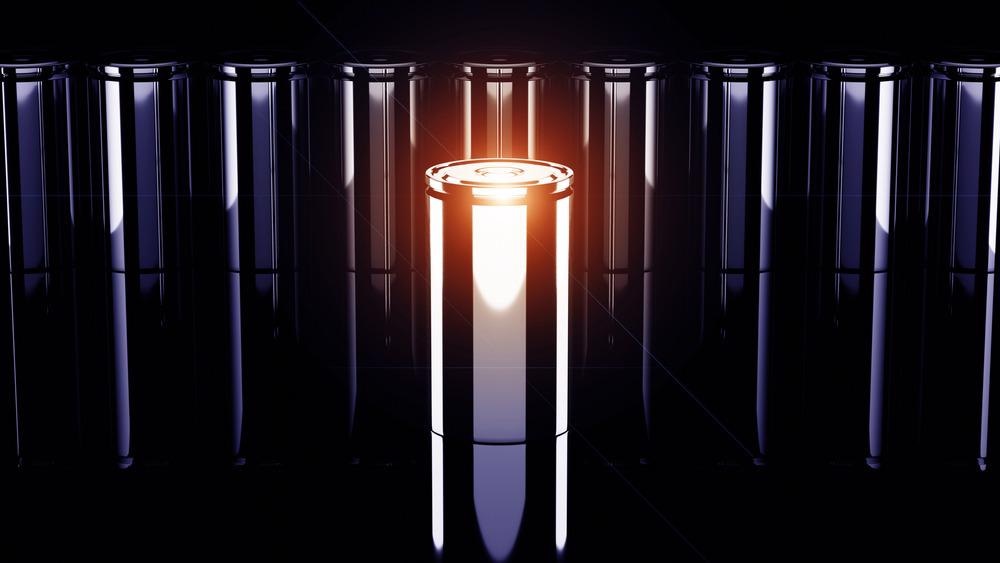In a study published in the Journal of Colloid and Interface Science, cerium oxide (CeO2) nanorod-adorned carbon fiber derived from cellulose paper was manufactured and utilized as an interfacial substance for lithium sulfur (Li-S) batteries.

Study: Cerium oxide nanorods anchored on carbon nanofibers derived from cellulose paper as effective interlayer for lithium sulfur battery. Image Credit: P5h/Shutterstock.com
Here, the team used a hydrothermal technique with the objective of closing the gap between research and implementation of Li-S batteries.
Out with the Old, In with the New
With the substantial growth of our ever-evolving civilization, energy consumption is a key critical concern worldwide.
Due to the sporadic nature of ecologically friendly and sustainable energy resources such as solar and wind energy, and geothermal power, there is a pressing demand for efficient energy storing systems.
Reusable Li-ion batteries (LIBs) have been explored and widely utilized in electronic goods, portable electronic gear, electric cars, and continuous power supply systems for multiple decades.
However, present LIB technology continues to fall short in terms of effectiveness due to poor energy density, which comes at a hefty cost. Because of their better features, lithium sulfur (Li-S) batteries are a viable option to replace traditional LIBs.
Limitations of Lithium Sulfur Batteries
The major issues with lithium sulfur battery systems include the thermal insulation tendency of sulfur, its reaction byproducts, and the dreaded "shuttling effect" of soluble higher order polysulfides of lithium in the electrolytic solution.
Overcoming the Limitations of Li-S Batteries
Scientists have concentrated on creating unique, high porosity carbonaceous materials for cathodes, and different embedding techniques to limit polysulfide shuttling to satisfy the requirements for mass production of Li-S batteries.
Because of their high electrical conductance, many carbon-based nanomaterials with a large specific area and high porosity may effectively trap lithium polysulfides while simultaneously acting as current collectors.
Even though these carbonaceous materials demonstrate outstanding Li2Sn trapping capabilities in lab test environments, the manufacturing technique of these suggested interfacial layers entails a complicated procedure and is not a feasible alternative for scalable interlayer membrane production.
Therefore, a quick and easy synthesizing technique for high porosity carbonaceous interfacial membrane material is an intriguing research subject.
Pyrolyzed cellulose may be utilized as an efficient carbonaceous interlayer for Li-S batteries.
Use of Cerium Oxide Nanorods
Previous studies have revealed the use of cerium oxide as a catalyst. There are several reports on the modification of nanoscale CeO2 on carbon fiber or carbon tubes for Li-S batteries.
Micro-sized pores loaded with CeO2 may aid in the entrapment of polysulfides, resulting in better performance of lithium sulfur batteries.
This study is based on the manufacturing of standalone carbon fibers from commonly obtainable cellulose paper in a reproducible, cost-efficient, and simple manner employing single step tube furnace carbonization and single pot hydrothermal fabrication of cerium oxide nanorods on carbon fiber.
Adhesives, current collectors, and conducting additives, add extra bulk to the interfacial layer.
The standalone interlayer, on the other hand, removes the need for an adhesive, conducting supplement, and current collectors, making it a more effective design and increasing the sulfur weight ratio.
Highlights of the Study
Based on carbon fiber architecture produced by CeO2 nanorod embellished on cellulose paper, an ecologically acceptable and cost-efficient technology for fabricating powerful cathode interfacial layer for Li-S batteries was established to relieve the polysulfide shuttle effect.
This interlayer allowed a Li-S battery to show an elevated discharging capacity and efficiency, as well as a good cyclic stability.
The suggested interface layer was shown to be particularly successful in mitigating the Li2Sn shuttling and self-discharge problems of the Li-S battery.
The strong capacity retention and cycle stability at various current rates suggest that designing the CeO2/CFP interlayer as a "vice-electrode" is a very practical method to commercializing Li-S batteries.
The key factors for the battery's increased performance are the adsorption and reutilization of soluble Li2Sn by CeO2 nanoscale rods and the good electrical conductance of the carbon fiber network.
These findings indicate that designing a feasible Li-S battery for prospective energy storing uses may be a simple and cost-effective process.
Reference
Azam, S., Wei, Z., & Wang, R. (2022). Cerium Oxide Nanorods Anchored on Carbon Nanofibers Derived from Cellulose Paper as Effective Interlayer for Lithium Sulfur Battery. Journal of Colloid and Interface Science. Available at: https://www.sciencedirect.com/science/article/pii/S0021979722001813?via%3Dihub
Disclaimer: The views expressed here are those of the author expressed in their private capacity and do not necessarily represent the views of AZoM.com Limited T/A AZoNetwork the owner and operator of this website. This disclaimer forms part of the Terms and conditions of use of this website.